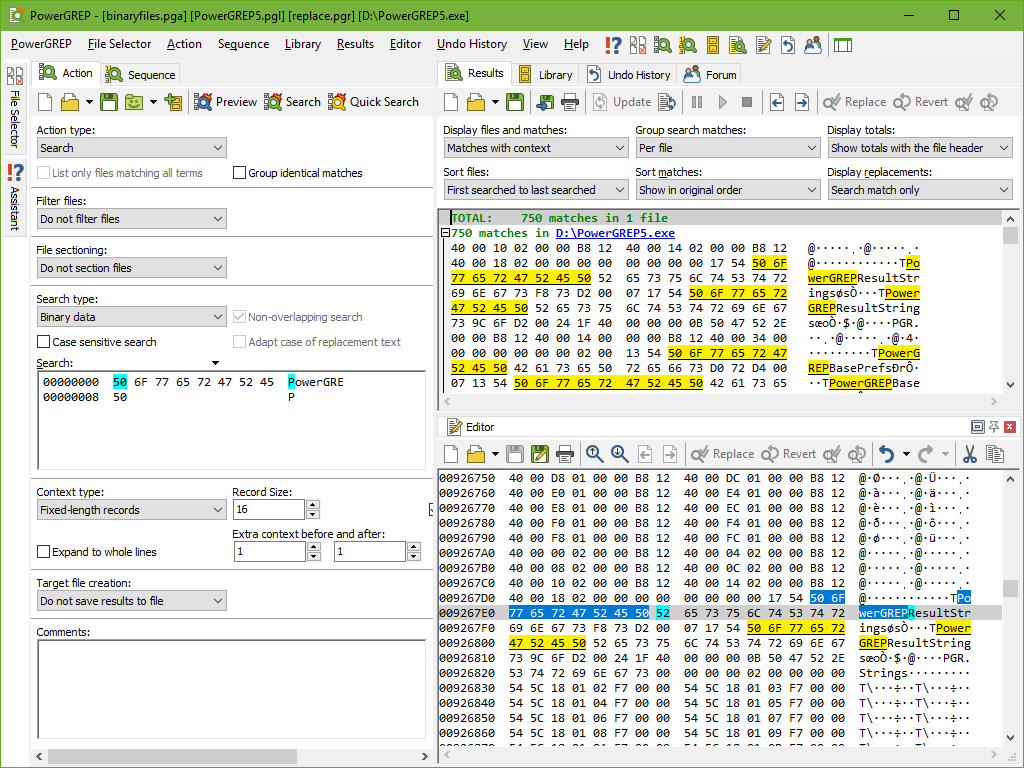

Those 1’s and 0’s, or the switches I mentioned above, are how your computer stores and processes data.īack in the day when the very first computers were built, they had actual lights bulbs to provide outputs to their users. Read also: Computer Science 101: What is a Computer? So what does this have to do with binary code?
BINARY PHOTO READER HOW TO
Your computer magically knows how to translate a certain key into the right letter.įinally, the computer produced an output: you see the right letter on the screen. These are the four basic tasks a machine needs to perform to be a computer in the first place.įor example, when you’re typing on your computer, your fingers hitting the keyboard are giving the computer inputs. To understand this better, let’s look at how computers work: How does a switch that is either on or off translate into what computers do? Thus, 1 means “on”, 0 means “off”.īut wait a minute: What kind of a switch are we talking about here? To simplify things, you can think of binary as being a way of telling a computer whether a switch should be on or off. How can a highly complex computer program consist of only 1’s and 0’s?
BINARY PHOTO READER CODE
What is binary code then? How does binary code work exactly? What matters is that you are aware of how such a simple language can translate into the most complex computer programs and information structures that you see and use on a daily basis. Thus, understanding at least the basics of what binary is and how it works is not only interesting and quite fascinating, but also quite useful.īut don’t worry if the concept of binary code seems abstract and difficult to grasp at first. Those 1’s and 0’s define how computers take inputs, store and process information, as well as produce outputs for their users – that’s you and me. It is what makes every computer you use work the way it does.Īll in all, binary code enables us to communicate with computers and give them instructions.Īnd even though the programming languages you use for writing code are hopefully far from binary code, they are still translated into binary for computers to be able to interpret them and run your programs. Nevertheless, binary code is probably the most fundamental concept underlying programming and Computer Science. Instead, developers like you and me use more user-friendly programming languages to give instructions to computers. You will (most probably) never write a computer programs in binary code. The "Enable Dithering" option lets you generate JPGs with dithering and you can switch between the 9 most popular dithering methods, including Floyd Steinberg, Stucki, and Sierra methods.Why should you understand how binary code works?īut if binary code is something only computers understand, why should you learn more about it? The colors can be selected using a palette or specified by the name, hex, or RGB code. Additionally, in the options, you can specify the two colors which should be used to create a binary JPG. This tool can automatically calculate the two dominant colors of any JPG and instantly display the picture in these two tones. By filling dots more densely, shadows and darker areas are produced and by having a low concentration of dots, the white and light areas are displayed. The dithering algorithm uses dot density patterns to paint the shapes, borders, and depths of objects in a picture. The second type of binary picture uses color dithering. The first method uses a color quantization algorithm that finds the two dominant colors in a picture and by calculating the difference in hue, all pixels take one or the other color value (whichever is closest).

The process of converting a picture to binary is called binarization and it can be done in multiple ways. Usually, the two colors are black and white but in this tool, you can set any two custom color tones. Such pictures are often created as pixel art and each pixel is stored as 0 or 1. A binary picture, also known as a two-level, bi-level, or 1-bit picture, is a picture that uses only two colors. With this online program, you can convert the given JPEG picture into a binary JPEG.


 0 kommentar(er)
0 kommentar(er)
